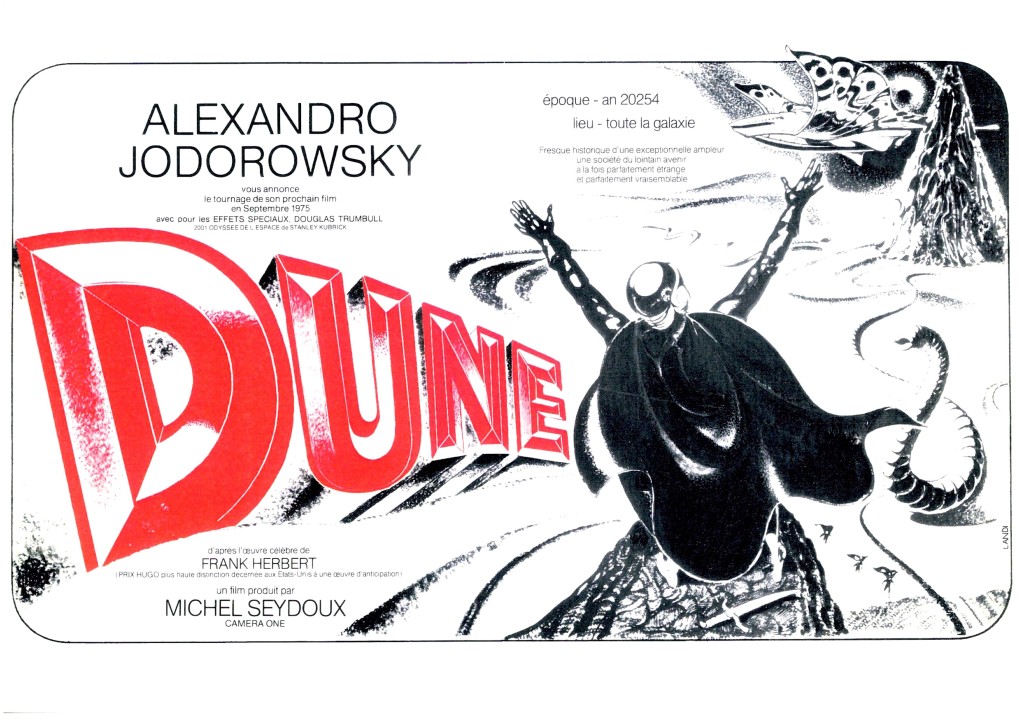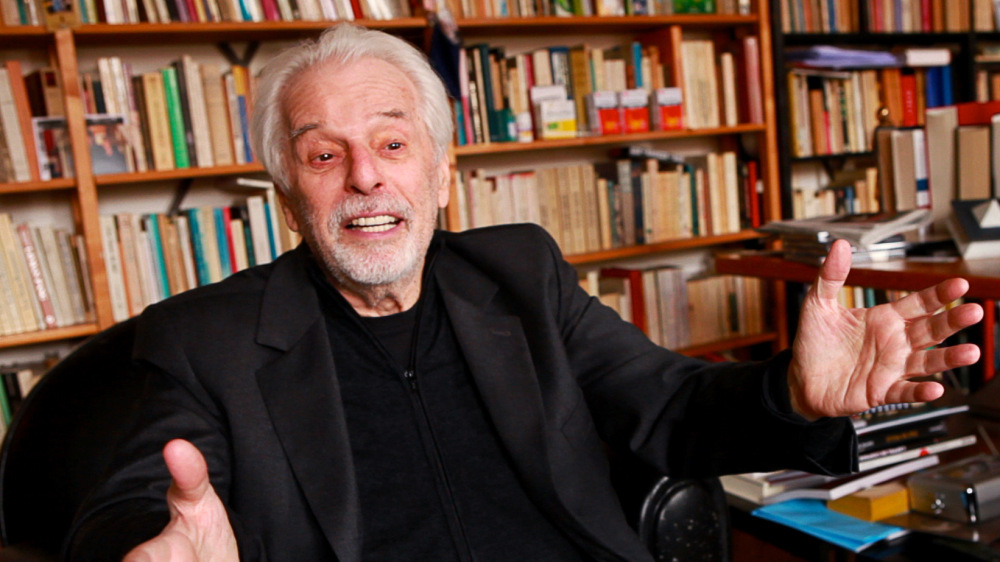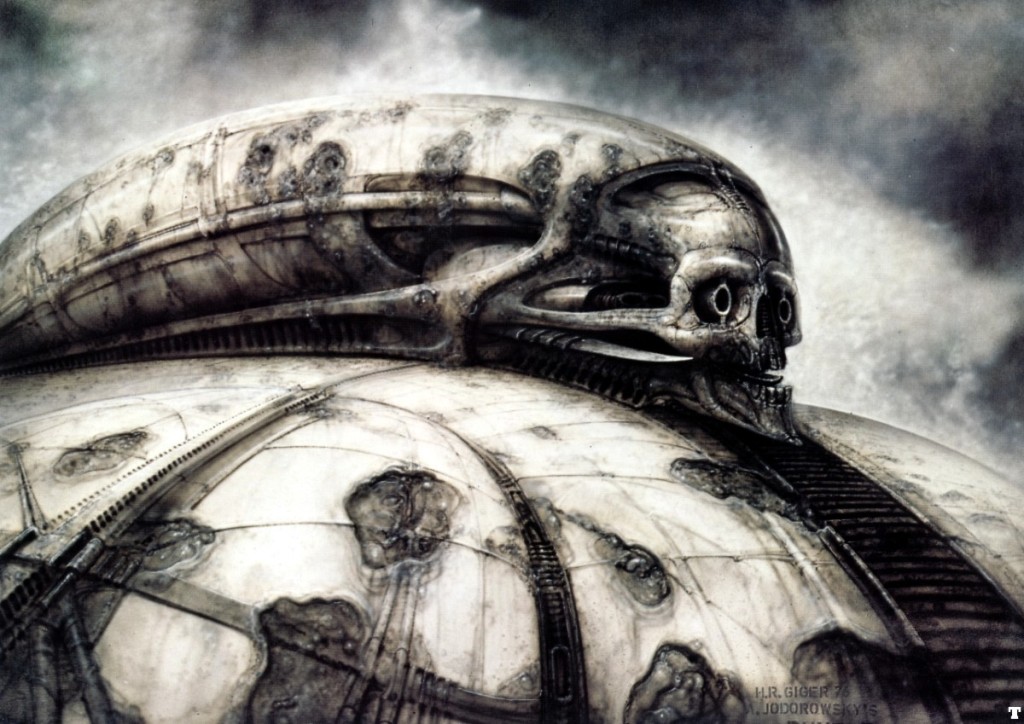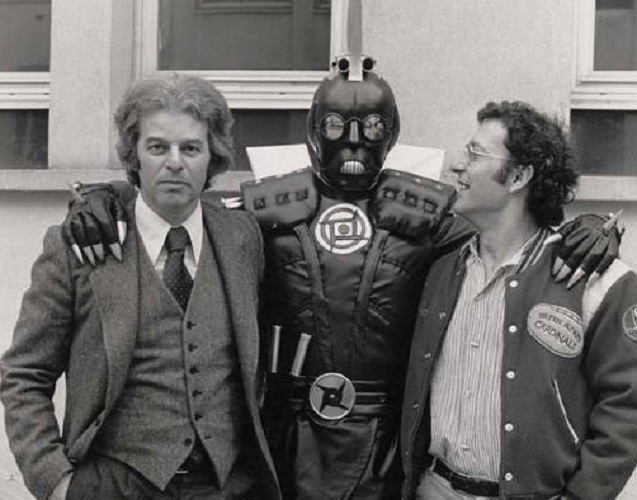Jodorowsky’s Dune, as you’d expect, spends a good deal of its 90 minute running time discussing the characters, places, and ideas behind Frank Herbert’s classic sci-fi novel. But Frank Pavich’s gripping documentary isn’t really about Dune (many of the interview subjects who worked on the film admit to having never even read the book) so much as it’s an exploration of Alejandro Jodorowsky’s creative process and his vital, under-appreciated role in the last forty or so years of popular culture.
Announced in 2011, Jodorowsky’s Dune is essentially a making-of documentary for a film that doesn’t exist (or exist outside of its director’s imagination, at least). Using a mixture of production art (from artists such as Moebius, Chris Foss, and H.R. Giger) and interviews with the persons involved with the near-creation of the film, the documentary walks us through Alejandro Jodorowsky’s pre-cinema life, and gives us an overview of his early avant garde films (such as El Topo and Holy Mountain) before bringing us to his long gestating but stillborn attempts to bring Dune to the screen.
Jodorowsky’s Dune, wisely, keeps much of the focus tight on the man himself. Pavich’s extensive interviews with Jodorowsky are the glue that holds the documentary together and, as a subject, he is electrifying. Even at 85, his seemingly boundless enthusiasm for a project that he has long closed the book on feels just as potent as it must have been 40 years ago. It’s evident in the film that Jodorowsky’s ambition was almost indefinably vast; in his own words, he wanted to make “a film that gives LSD hallucinations – without taking LSD.” Often, the interviews feature Jodorowsky flipping through a large tome containing Moebius’ storyboards and in a sense it serves as a clever visual metaphor for the documentary itself: Pavich and Jodorowsky, with reverence, are taking us through this holy text and revealing its secrets to us.
On one level, Jodorowsky’s Dune is the story of how a man (a genius) approaches the task of making his vision a reality and, ultimately, how he deals with the failure of that vision. When Jodorowsky speaks of the project, it’s like he’s speaking of a lost love. When he says that he hopes perhaps one day an animated film will be made from Moebius’ 3,000 storyboard panels, there’s a sadness to his voice but also a measure of pride. Whether anything comes from his years of work, Jodorowsky is clearly a man at peace with what he’s accomplished.
On another level, the film is practically a Rosetta Stone for understanding nearly the last half-century of pop culture. The film details encounters with icons so ridiculous that they have to be true: Jodorowsky enticing an over-the-hill Orson Welles into taking the part of Baron Harkonnen by offering to have his favorite French restaurant’s chef on set, his bizarre series of meetings with Salvador Dalí (cast to play the mad emperor of Dune and paid $100,000 per minute of screentime). The documentary shows us how some of the most important artists of all time, from Welles to Dalí to Mick Jagger to Pink Floyd, all intersected for one brief moment in time for this impossible project. Jodorowsky’s Dune points out towards the film’s conclusion that, even strangled in the crib, Dune‘s impact on the cinematic landscape was immense: the relationships formed between Moebius, special effects guru Dan O’Bannon, Chris Foss and H.R. Giger were essential to the creation of Ridley Scott’s Alien, for instance. Even unrealized, the strength of Jodorowsky’s vision was impossible to be contained, seeping out and permanently staining the cultural landscape.
Part post-mortem/part celebration, Jodorowsky’s Dune is a rare documentary that gives us insight into a strange but incredibly important chapter in film history. It sheds light on a project whose aims and imagination were perhaps too large to be captured on celluloid, an ambitious failure that we should nevertheless revere and celebrate.
Jodorowsky’s Dune is now playing in select theaters in New York and Los Angeles, with future screenings across the country beginning March 28th.






